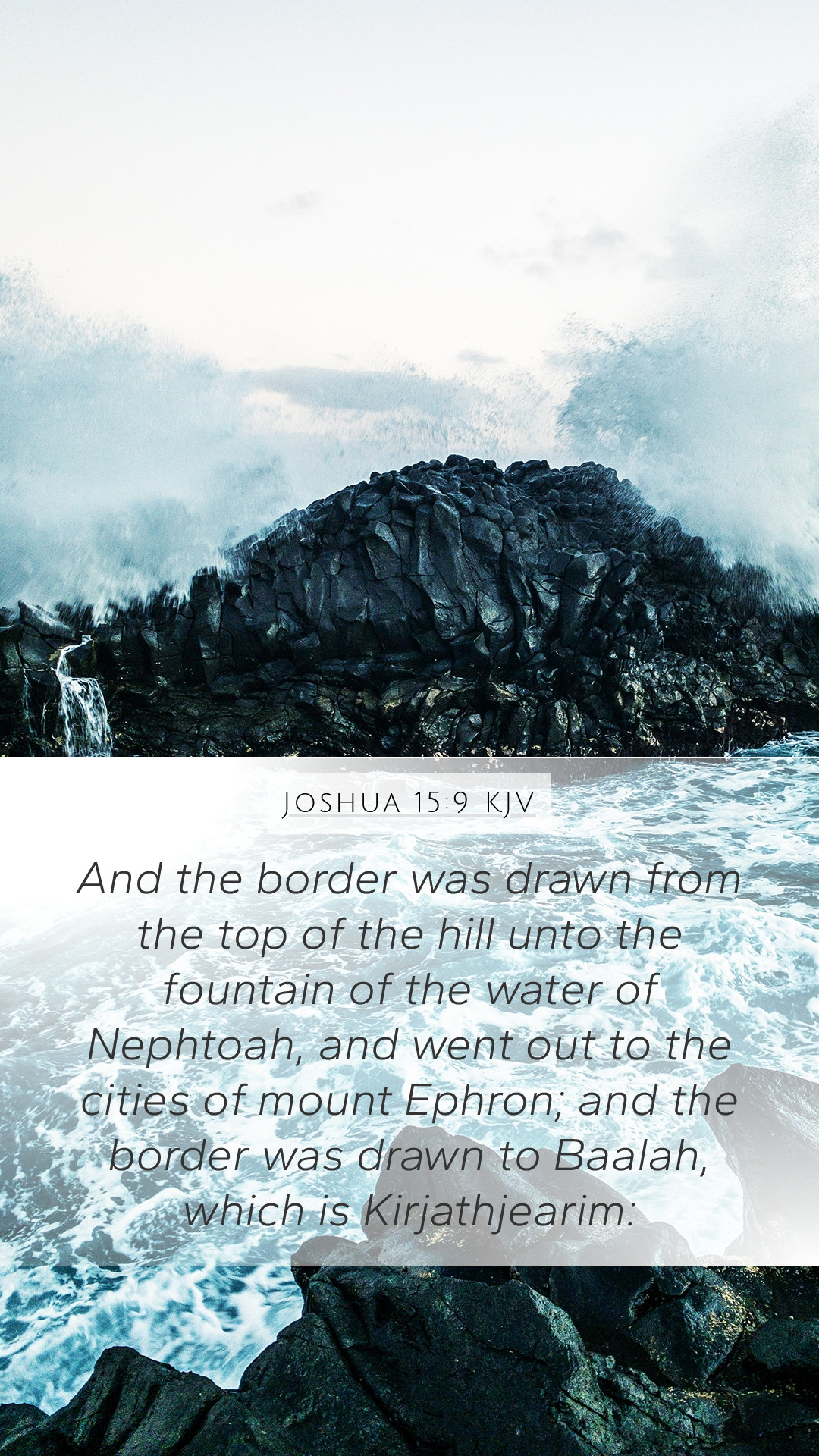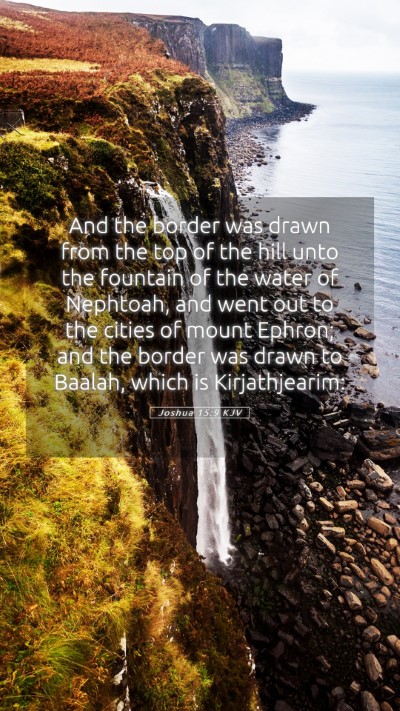Understanding Joshua 15:9
Verse: Joshua 15:9 states, "And the border went up to the valley of the son of Hinnom, unto the south side of the Jebusite; the same is Jerusalem: and the border went up to the top of the mountain that lies before the valley of Hinnom westward, which is at the end of the valley of giants northward."
This verse details a specific section of the border allocations for the tribe of Judah, describing the geographical landmarks that define its boundaries.
Importance of Geographical Context:
In studying the meaning of Bible verses like Joshua 15:9, understanding the geographical context is vital. The mention of the Valley of Hinnom and Jerusalem indicates the significance of these locations in Israel's history and their spiritual implications.
- The Valley of Hinnom, known as a place of refuse and a site of idolatrous practices, symbolizes both judgement and redemption.
- Jerusalem, as a center of worship, holds great importance in Biblical history, being the location of the temple and the heart of Israel.
Bible Verse Interpretations
Matthew Henry's Commentary: Henry notes that the borders defined here reflect the faithful fulfillment of God's promise to the tribes of Israel. His analysis highlights the detail and accuracy with which God’s promises are fulfilled through geographical determinations, encouraging readers to trust in God’s word.
Albert Barnes' Commentary: Barnes emphasizes that this account serves not just as a historical record but as a reminder that God gives land to His people. He reflects on the spiritual implications of the land occupied by the Jebusites and the proximity to Jerusalem, urging a deeper understanding of the ongoing struggle for this sacred space.
Adam Clarke's Commentary: Clarke elaborates on the significance of the specific locations. He interprets the valley mentioned as being of dual nature—a place of despair, as well as a site of future hope through redemption and salvation. Clarke stresses that the interplay of light and darkness in these locations serves as a metaphor for the human condition.
Bible Study Insights
This verse provides deep insights that can enhance your Bible study. By analyzing the geographical landmarks embedded in this passage, we gain understanding of the broader narrative of Israel's journey.
Key Themes to Explore:
- The Symbolism of Jerusalem: Reflect on what Jerusalem represents in the Old Testament and how that shapes our understanding of God’s relationship with His people.
- The Valley of Hinnom: Explore the historical significance of this valley in Israel's history, reflecting on its implications for spiritual life and moral choices.
- The Nature of God’s Promises: Consider how the physical landscape reflects the truth of divine promises across both Old and New Testaments.
Suggestions for Bible Study Groups
This passage can serve as an excellent foundation for online Bible study or in-person Bible study groups. Consider utilizing bible study guides or bible study resources that delve into the history and significance of Judah’s land inheritance. Encouraging discussions around this verse can lead to profound insights and applications.
Related Bible Cross References
- Joshua 18:16 - Further details on the geography around Jerusalem.
- 2 Samuel 5:6 - The capture of Jerusalem as a significant event.
- Jeremiah 7:31 - References to the Valley of Hinnom, emphasizing its spiritual implications.
- Matthew 5:22 - Connection to the idea of judgment in this location.
- Hebrews 11:16 - Commentary on the notion of a heavenly city, contrasting the earthly Jerusalem.
Application of the Verse
For personal application, reflect on how the spiritual landscape illustrated in this verse mirrors our own lives. Are there valleys of despair that can lead to redemption? How does the significance of these locations guide our understanding of God’s promises today?
In conclusion, Joshua 15:9 invites readers to engage in deep Bible verse explanations, examine the historical context, and explore how these ancient boundaries relate both to their contemporary spiritual lives and to God's ongoing work in the world.


